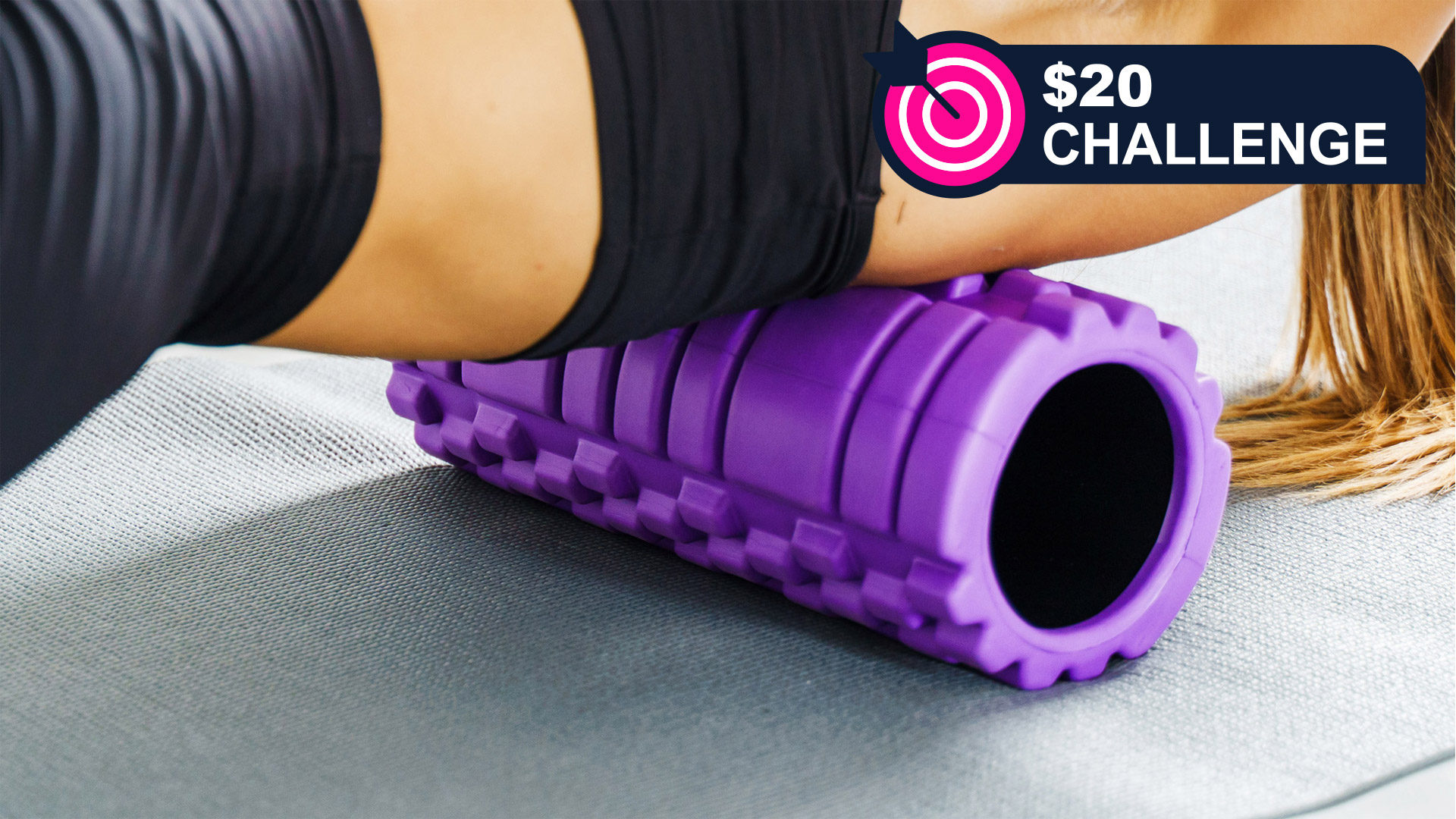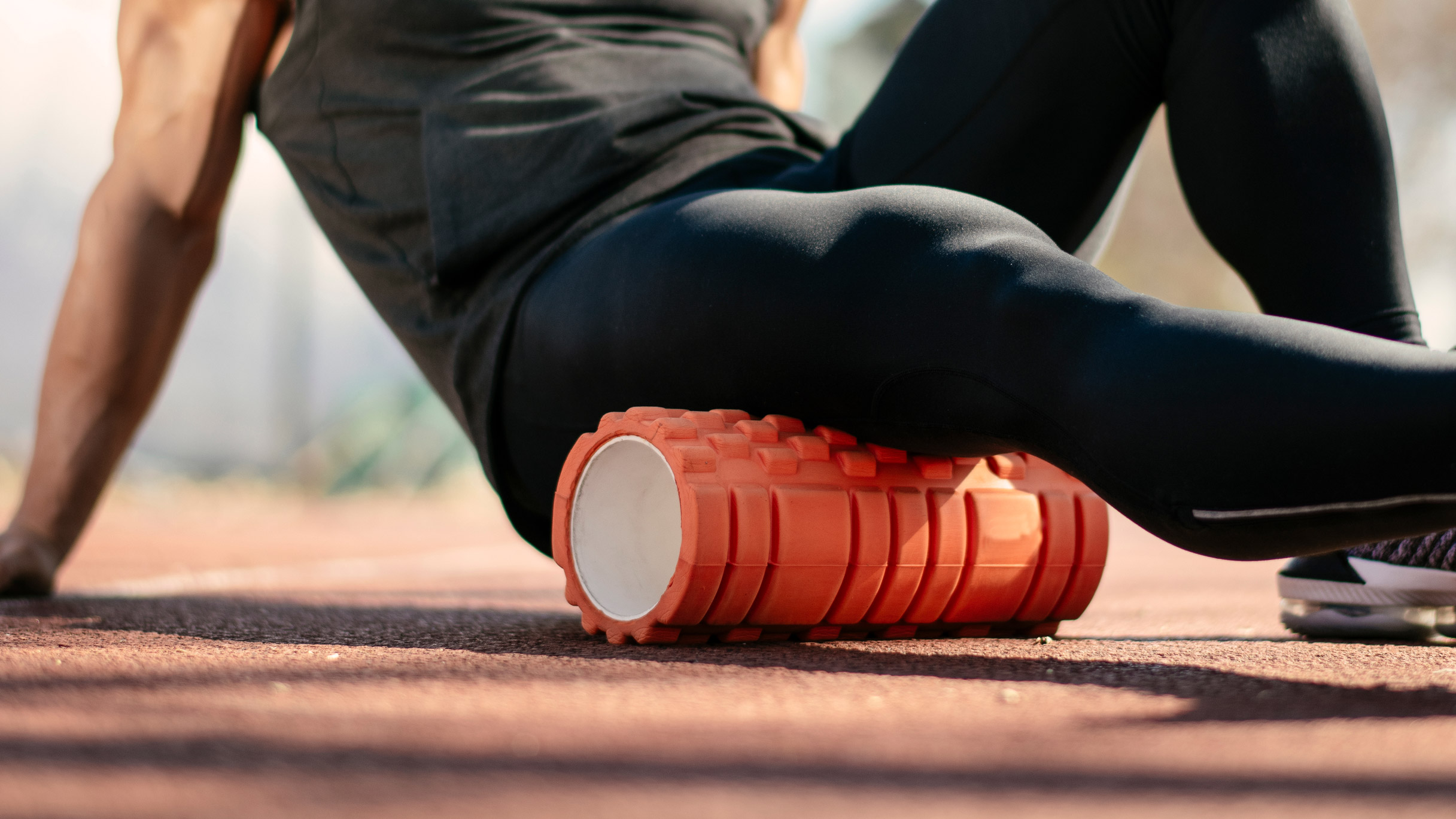I used a cheap foam roller every day for a week: Here's what happened
Here’s why a foam roller should be part of your gym kit

If you’ve felt a load of aches after a heavy gym session or run, you’re not alone, and while stretching and post-workout shakes will undoubtedly help your muscle rebuild, there is another way. Foam rollers, like this classic dense gridded example from WIUUP, are a fantastic way to add cost-effective percussive massage and mobility work to your exercise and recovery routine.
Cheaper (although a tad more painful) then the best massage guns, it’s tough to get used to, but you can certainly reap the rewards of improved mobility and faster recovery with regular practice. Over 14 studies on foam rolling found it can increase joint range of motion short-term, and “may help attenuate decrements in muscle performance and DOMS after intense exercise”.
This is the latest in a regular series of articles in which we test really cheap gadgets to see if they're worth even the small price you'll pay for them. Read them all here.
Foam rollers are comprised of dense foam, with the WIIUP rollers made of ethylene vinyl acetate, to be precise. They’ve often got spikes aligned into grids, and the whole construction is wrapped around a plastic tube. So, with a little bit of foam rolling, your muscles may recover less painfully and faster after a hard gym session. To test out this theory, our writer tried foam rolling with a cheap WIUUP roller after his workouts every day for a week. Here’s how he got on:
Foam rolling has become a popular way to help ease muscles after strenuous exercise, and while the humble foam roller itself may not look like much on its own, you should ignore it at your peril.
Here’s how foam rolling helped me, after only a week.
What is foam rolling?
So you’ve bought a foam roller, but why? Think of it as a handy masseuse that gets to work on your muscles to help them relax after a session. Big squat day today? You might want to target the backs of your legs, or the front of your thigh, to help get more blood into your muscles.
At first, you’ll certainly feel a difference - mainly in just how much foam rolling can cause a considerable amount of pain as it works into your soft tissue between muscles, called fascia.
Get daily insight, inspiration and deals in your inbox
Sign up for breaking news, reviews, opinion, top tech deals, and more.
After a few sessions, though, your muscles will allegedly have more blood flow, be more oxygenated, and be stronger, too. Here’s how it affected me after a week.

1. It hurts
Just like more rigorous sports massages, there’s a point when foam rolling that you’ll be tempted to stop, and perhaps surprised not to see a bruise or two.
Rolling my upper legs, predominantly around my hamstrings, was tough. However, I’m glad I pushed through. Still, it’s worth mentioning that if it hurts, it doesn’t necessarily mean you’re doing it wrong.
2. Improved flexibility
I’ve long had an issue whereby extending my legs fully has been a challenge, almost as if my hamstrings aren’t quite long enough. It’s fine when standing, or laying down, but as soon as there’s one iota of additional muscle movement, my legs feel permanently bent.
While foam rolling hasn’t entirely negated this phenomenon, it has made me feel like I can stretch just a little further. It has not drastically improved my yoga technique within a week, but I do feel as though little by little, it could allow for increased flexibility across a wider range of muscles.
3. Improved recovery
This is the big one for me, as foam rolling has made my transition from 'bro split' workouts to a more all-around body workout three times a week, drastically smoother.
Even as recently as the start of this year, I’d frontload leg workouts at the start of the week knowing recovery could take two, three, or even four days, giving me time to focus on my upper body in the interim.
With a move to a more balanced workout program, I’ve found I’ve removed the feeling of dread each morning when I check Fitbod, instead feeling like my muscles have recovered enough thanks to increased oxygenation (presumably) and blood flow. It’s night and day.
4. Reduced muscle tightness
My post-workout muscle tiredness was becoming such an issue that I had to slow things down a little. It’s all well and good going to the gym, but if I’m struggling to function in the hours that follow, it’s harder to justify. That’s doubly so as a father with a very active toddler.
Whereas before foam rolling I’d have to take 'rough-and-tumble' playtimes a little more slowly, I am finding myself a lot more capable of doing, well 'Dad things' again.
Will I keep it up?
When I began performing mountain climbers daily, I noted that I started enjoying them, especially when breaking the sets up into manageable chunks throughout the day.
The discomfort caused by foam rolling makes it tougher to enjoy, but I also feel like it’s easy to do while relaxing in the evenings because it can almost be done passively.

Lloyd Coombes is a freelance tech and fitness writer for TechRadar. He's an expert in all things Apple as well as Computer and Gaming tech, with previous works published on TopTenReviews, Space.com, and Live Science. You'll find him regularly testing the latest MacBook or iPhone, but he spends most of his time writing about video games at Dexerto.